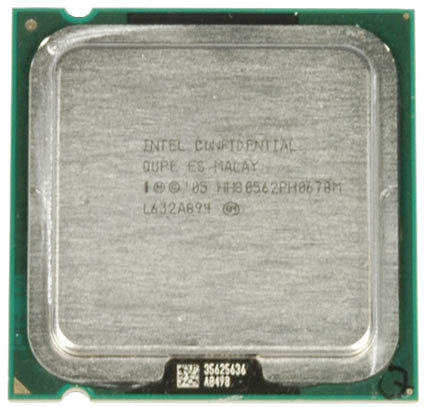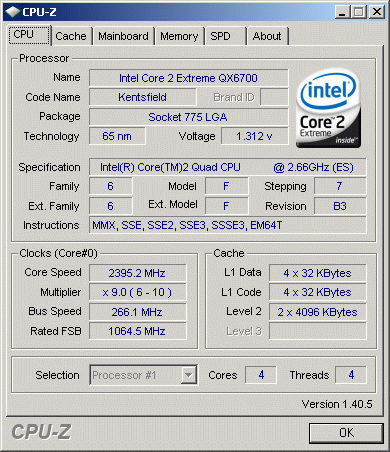Parallel Processing, Part 1: CPU Cores
Dual Vs. Quad Cores
The Core 2 Quad Q6700 is a 2.66 GHz quad core processor, using two Core 2 Duo dies inside.
While there are many reasons to opt for a dual core processor, the quad cores do not yet always live up to their full potential. One reason is limited thread-optimizations of software, while others have to do with the architecture. Though AMD likes to criticize Intel’s approach of putting two dual core dies into a single processor as not "true" quad core, the concept works well for Intel on the business side of things, and it very well delivers four-core performance. On the manufacturing side, it’s easier to reach higher yields and output more products with smaller dies, which can be combined to a more powerful product later on in the manufacturing process. On the performance side, though, there can be bottlenecks - the two dies communicate via the system interface, and it’s difficult to exercise control over all individual cores when multiple pieces of silicon are present. The latter would be important to achieve ideal power savings and to adjust individual core clock speeds to fit the current application requirements.
True quad core concepts put four cores and their cache memories onto a single die. The important thing is to have a shared, unified cache, which AMD introduces by maintaining the 512 kB L2 cache for each core, and adding a L3 cache to all cores. The advantage is that it will be possible to shut down individual cores and accelerate others in order to achieve better single-thread performance. Intel will follow the same path, but not before the introduction of its 2008 Nehalem architecture.
System information utilities such as CPU-Z tell you about the core count and total cache size, but not the layout of the processor. You wouldn’t know that Core 2 Quad (or the quad core Extreme Edition as shown in this screenshot) consists of two dual cores.
Get Tom's Hardware's best news and in-depth reviews, straight to your inbox.

Patrick Schmid was the editor-in-chief for Tom's Hardware from 2005 to 2006. He wrote numerous articles on a wide range of hardware topics, including storage, CPUs, and system builds.

